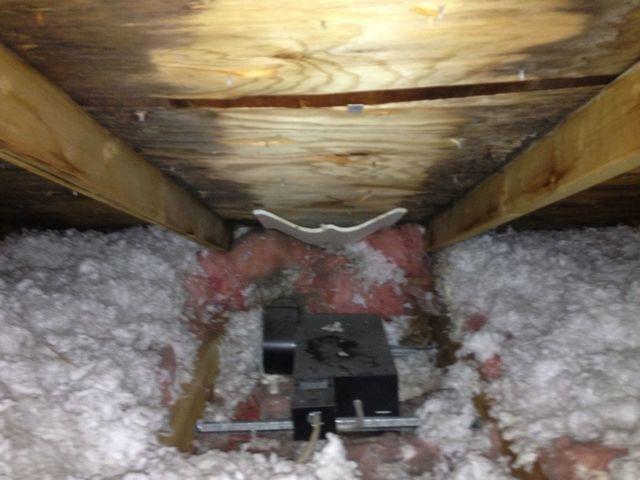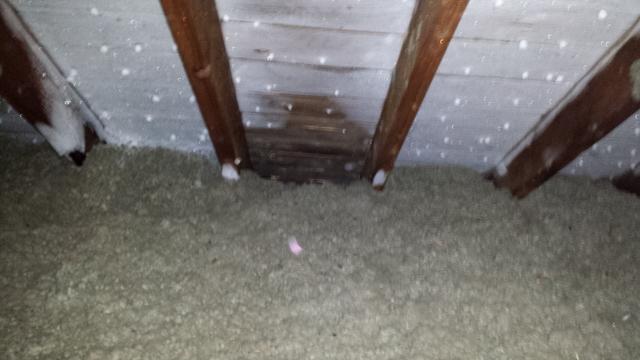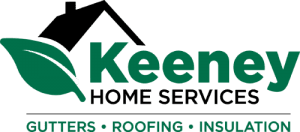Attic Moisture and Mold
Mar 31, 2021Thursday, January 2nd, 2014 by Ronald Evans
Excess moisture inside a home presents itself in a number of different ways. Knowing telltale signs of moisture and how to best remedy the underlying problems requires a trained eye and a vast knowledge of home science. Dr. Energy Saver by GutterShutter of NE WI has this knowledge and specializes in making homes healthier and more comfortable. Attics are a perfect habitat for mold growth and oftentimes excess moisture within a home reveals itself in the form of mold.
What can prevent mold growth in my attic?
Something as simple as a bath fan vented into the attic instead of outside the house can start the moisture problem and subsequent mold growth.

Above is a bath fan vented directly into the attic. The middle area shows no mold growth because the proper vent allows adequate airflow. The dark areas on either side of the roof deck show mold growth from the bathroom moisture.
Mold needs three things to grow and thrive: moisture, oxygen, and organic material (food.) This should be a huge red flag for any home owner as mold can result in a very unhealthy environment for the occupants and also for the structure itself. A scary thought is that many homeowners don’t know that they have a problem. While mold in the attic might not seem like a big deal since it is separate from the rest of the house, improper air sealing can allow mold spores to infiltrate the living space. The attic provides a great place for mold to thrive.
Mold growth can lead to structural issues in your WI home
While the health of the occupants is by far the most serious effect of mold growth, the health of the structure can also come into question. Mold and moisture on organic building materials-framed walls, roof trusses, roof sheathing, etc-can result in structural deficiencies and in the worst case make a structure unsafe. Proper insulation, ventilation, and air sealing will all help to alleviate and eliminate moisture problems within the home and make the home healthier overall. These types of projects also possess energy saving opportunities due to less heat loss.


The picture above shows another possible effect of excess moisture during a cold Wisconsin winter. Frost has formed on the underside of the roof deck.
Dr. Energy Saver by GutterShutter NE WI is proud to offer services to both diagnose and remedy these types of unhealthy circumstances and save homeowners money in the process. Contact Dr. Energy Saver by GutterShutter today and we’ll send one of our trained energy professionals to visit your home and provide a thorough home energy evaluation and help prevent mold growth issues in your WI attic.

